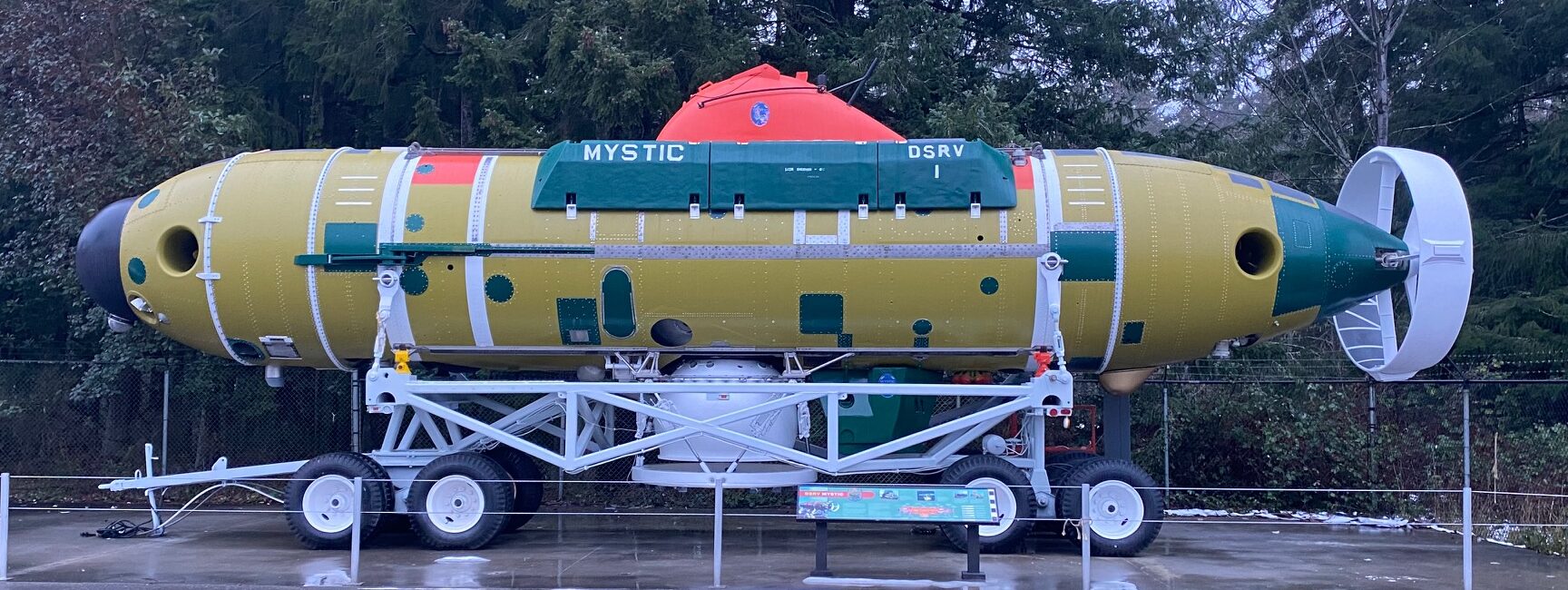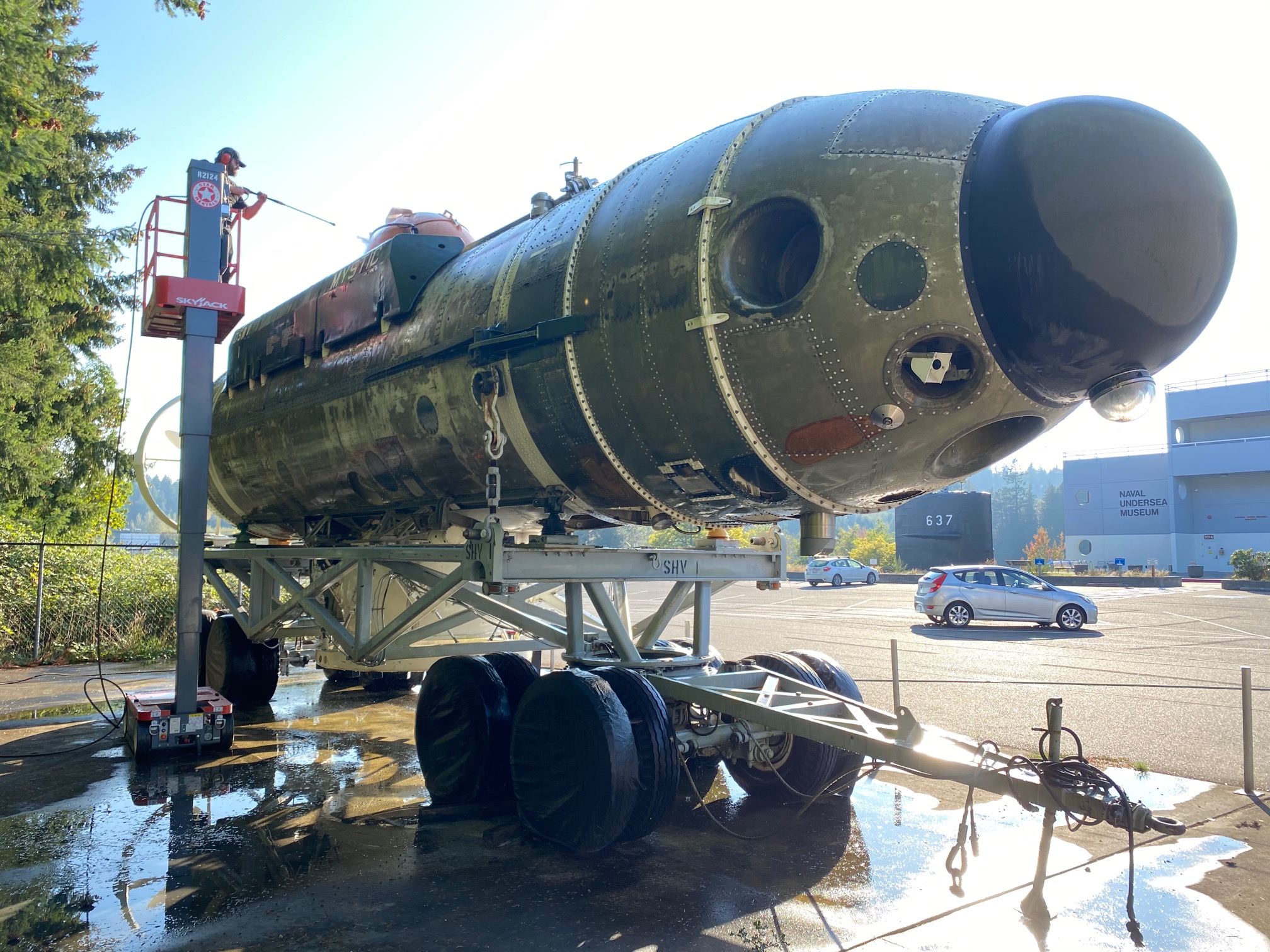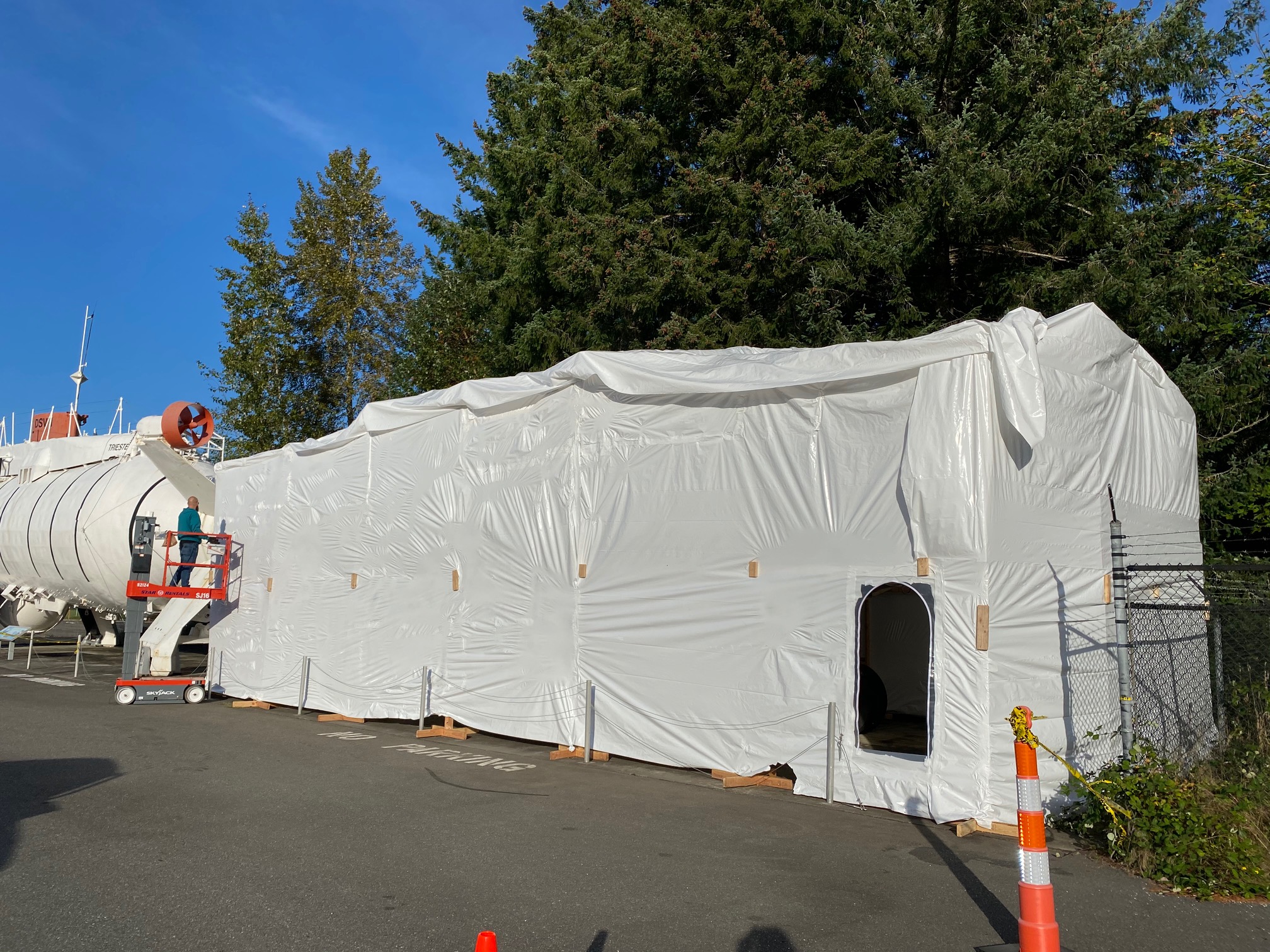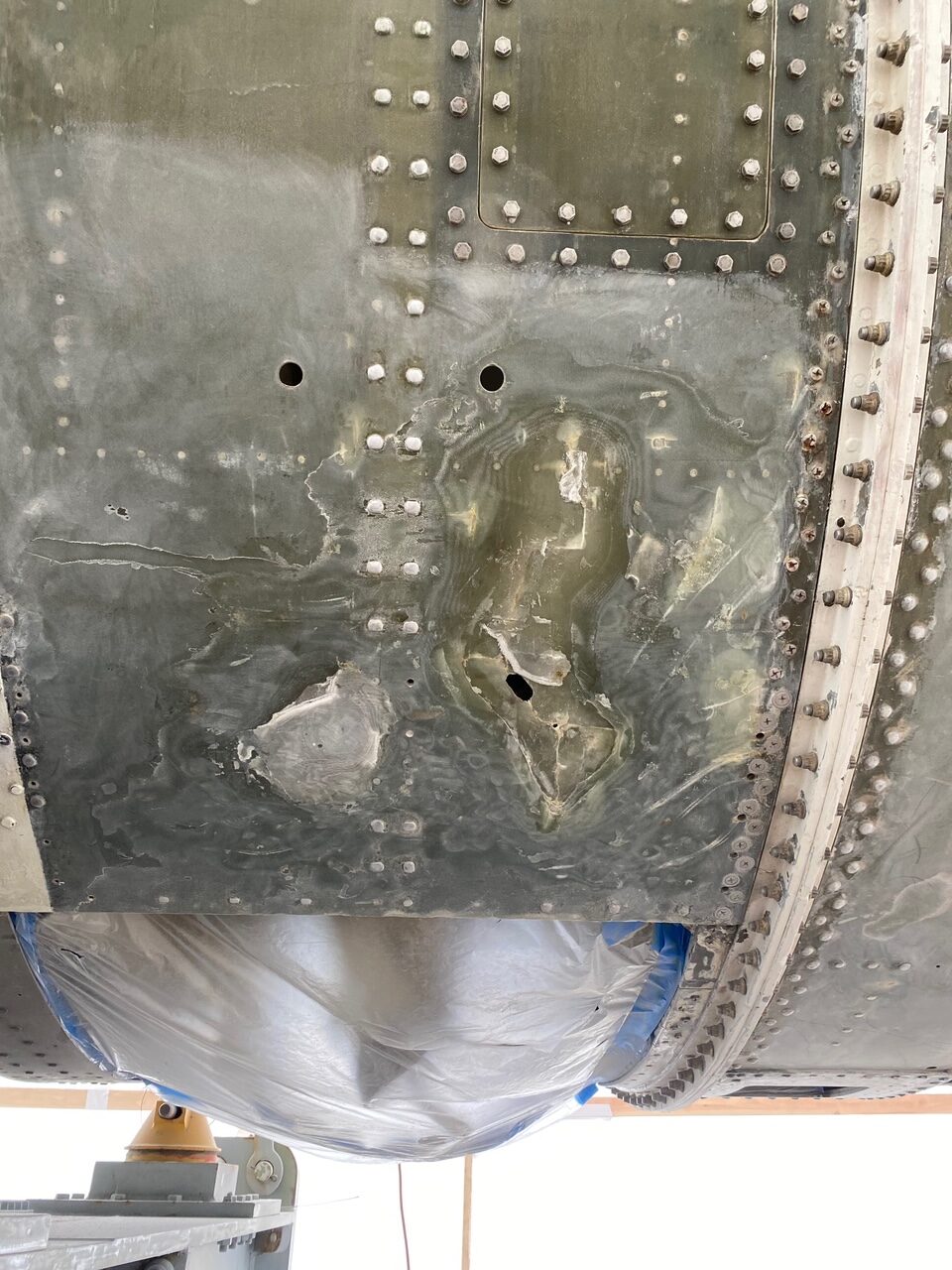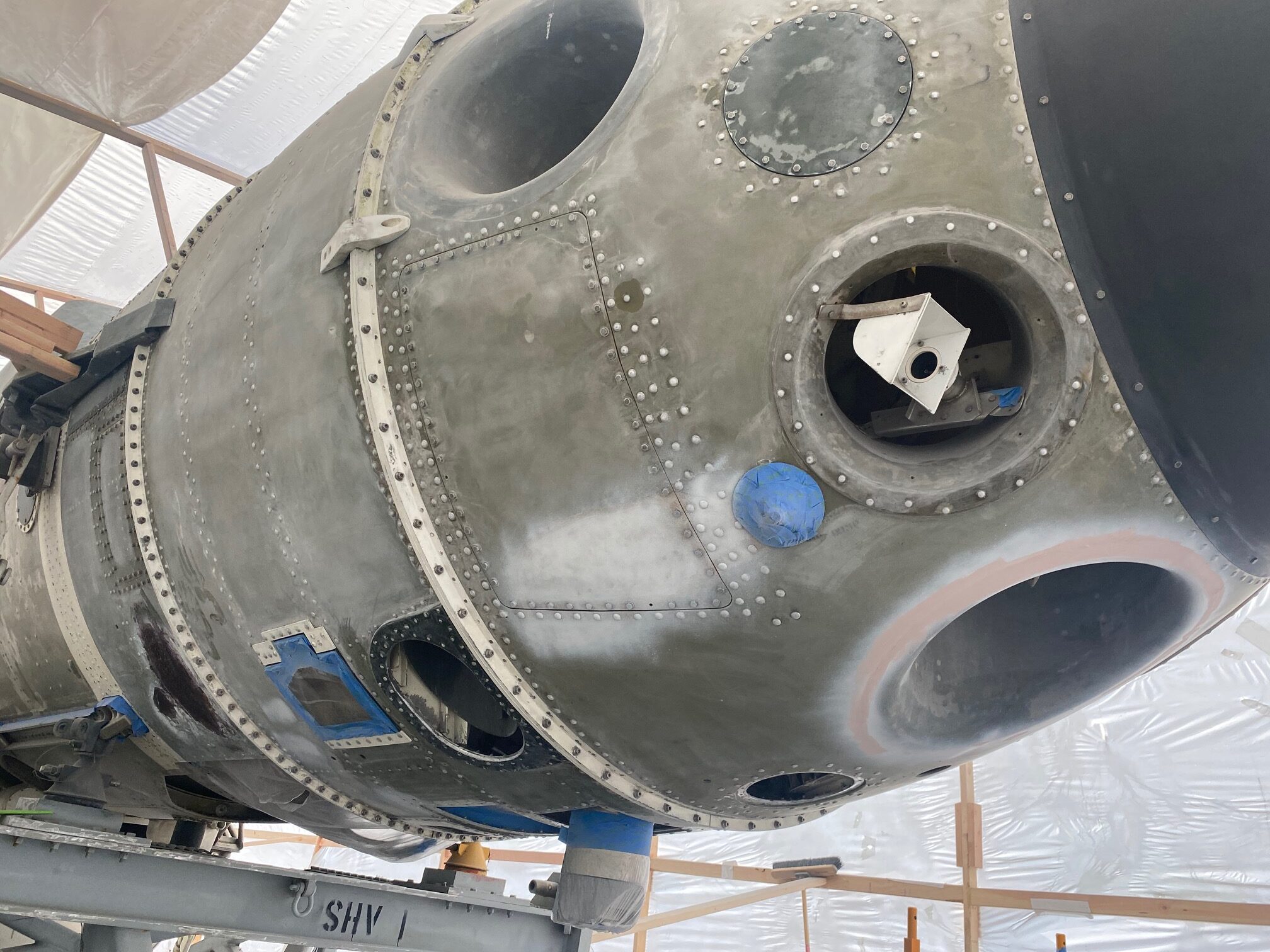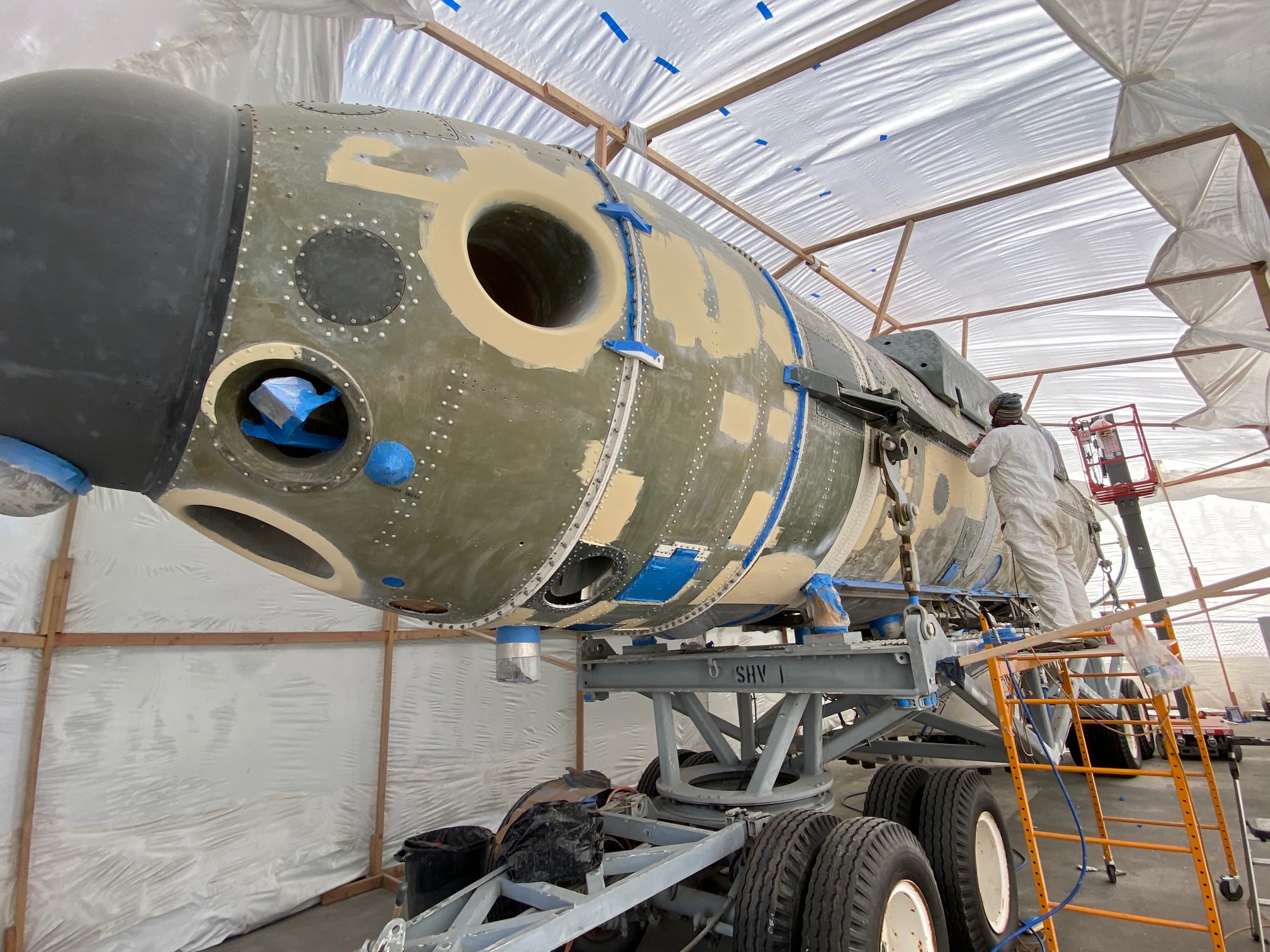Mystic Restoration October 2020 – January 2021
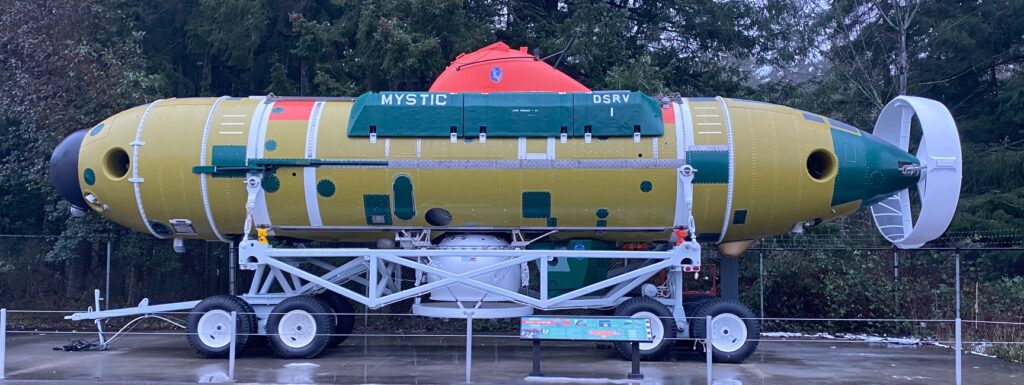
Background
Mystic was decommissioned in 2008, after serving as one of two DSRVs (Deep Submergence Rescue Vehicles) used by the Navy since the 1970s. For six years, the Navy tried to determine where these vehicles would end up. USNUM lucked out: Mystic was transferred to the museum and delivered to Keyport in October of 2014.
Already in 2014, we knew the vehicle needed restoration work in order to withstand outdoor display. It had been sitting in the San Diego sun for six years without maintenance, and the wear to its fiberglass hull was obvious. The variety of colors on the vehicle’s patchwork hull showed the extent of the degradation across its surface. Some areas were highly delaminated, and needed to be addressed. Immediately, conversations began about what it would take to restore the vehicle, to make sure the integrity of its hull was materially strong, allowing it to remain on outdoor display at the museum.
In 2017, Steve Granger, a historic vehicle restoration specialist from the National Naval Aviation Museum, visited USNUM, and worked with staff to develop a project plan for Mystic’s restoration. Based on his assessments and expertise, we formulated the Statement of Work (SOW) for this project and identified potential vendors who could execute the work in our local area. We then worked with several former DSRV crewmembers, our wonderful “Mystic Working Group,” to review the SOW based on their technical knowledge and extensive experience working with the vehicle.
In August 2020, NHHC notified the museum that there was end of year funding available to finally see this project through if we were ready to go with it. We were!
Restoring Mystic
We submitted the contracting paperwork immediately, and began the contracting process. About five weeks later, the contract was awarded to InFocus Marine. They began the job on October 2, 2020.
The first step was to pressure wash the vehicle, removing the grime and dirt that had accumulated, so the contractors could get a better look at the vehicle itself. The contractors then constructed an enclosure around the vehicle, and Mystic was lost from sight for the next few months. While under the cover of this tent, they worked to sand off the prior clear coat, grind out the failing areas of the fiberglass, and then refill those areas with a compatible filler, in line to the vehicle’s original shape. The patched areas were then re-sanded down, at which time primer could be applied. First it was applied to the patches, and then to the vehicle as a whole. Meanwhile, for the metal components, their top coat was removed so that the corrosion could be addressed. This was for both the vehicle components and the trailer it sits on.
Once the vehicle was clean, smooth, and primed, the painting began. The contractors chose colors that best matched an average color of the vehicle, a more olive green for the main body and a more forest green for the darker panels. These color choices were not an attempt to restore Mystic to a previous color scheme, or to represent the degradation as it was in its patchwork scheme, but to have a uniform color that we could keep up over time. Looking at the vehicle now, I see an artifact that is going to stay with us for many years to come, rather than one that is facing the perils of outdoor elements with minimal protection. It’s a great feeling!
What’s Next for Mystic?
Mystic is too large to fit inside the building, so it will stay in its current exhibit location. We are having initial conversations with Naval Base Kitsap to determine if we could put a structure over the historic vehicles, to better protect them from the elements. Outdoor display is never ideal for artifacts, since they face the hazards of the sun, wind, pollution, and, of course in our region, rain. Unfortunately, it’s not so simple as putting a tent over the vehicle long-term, as there are many considerations, including base security, to be taken into account, before we can even begin asking NHHC for funding for that project.
The current paint coat will dull a bit from exposure to those same elements, but the value of the paint is that it will protect the fiberglass underneath. We anticipate that in ten to fifteen years, we may need to repaint Mystic, but the process will be far less invasive, since the vehicle itself will be sound! —Beth Sanders, Collections Manager

